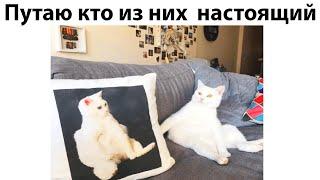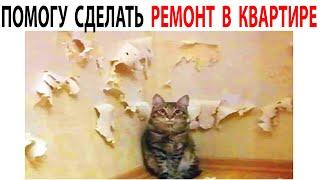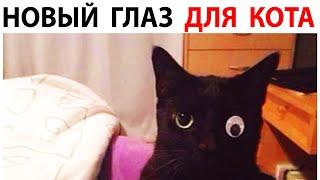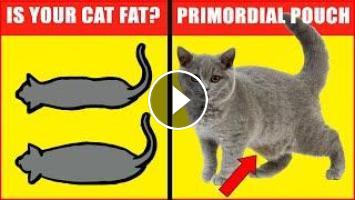Many people think that this flabby belly is due to an overweight feline, but that’s not completely true. This loose-hanging belly is formally called a primordial pouch, and even big cats such as lions and tigers have them too.
In this video, we will talk about what a primordial pouch is, and how to tell if your feline is overweight.
Primordial pouches usually develop in the adult stage of some felines, and they are perfectly normal and healthy part of any cat.
All cats have these abdominal flaps, although they vary in size from cat to cat. Some felines have undetectable pouches, while others are easily spotted as they flap around as your cat walks or plays. These pouches are more noticeable in senior cats.
A primordial pouch is a genetic inheritance from feline ancestors.
Although our domestic cats have all their basic needs met by their owners, most felines maintain their saggy pouch. It's believed that this pouch exists for three primary reasons.
Firstly, it acts as a food storage. In the wild, cats don’t get a bowl of kibble every day. They often gorge themselves on big meals at a single sitting since their hunting success is erratic, and they may not have another meal for days.
A primordial pouch helps cats store excess food they consume, serving as a built-in food and fat storage tool. This will provide cats with sustenance for days.
More often than not, wild cats use this pouch when food is scarce, like during the winter when it's more difficult to find prey.
A primordial pouch also facilitates movements and contributes to the cat’s famous flexibility.
The extra skin gives cats more room to jump, stretch, and climb. It also contributes to great running strides as it provides felines with more freedom of movement.
Finally, the primordial pouch provides protection for cats. This extra skin and fat insulates a cat’s vital organs, especially during attacks. Fighting cats use their hind legs to rake their enemies in a move called bunny kicking, and their pouches keep these bunny kicks from reaching the vulnerable areas of the body.
How to tell the difference between the primordial pouch and an overweight cat.
It's important to be able to tell whether your cat is overweight or has a large primordial pouch. Just like in people, obesity can lead to many health problems, such as diabetes, cancer, hypertension, and heart problems. Being overweight can also increase cats' risk of arthritis and back problems.
One way to differentiate between a primordial pouch and extra weight is by observing the cat's overall shape.
Overweight cats have rounder bodies than healthy-weight cats with large pouches.
When you look down at your cat when they are standing, there should be a slight indentation above the hips.
If the waist area bulges out instead rather than indenting in, then your cat may be fat.
You can also check whether you can feel your feline’s ribs by pressing on their body. If you have to press really hard to feel your kitty’s ribs, then your cat is probably overweight.
Finally, primordial pouches swing when a cat walks or runs, whereas overweight bellies do not.
If you believe that your pet is overweight, ask your vet for advice on an appropriate diet to ensure they get enough nutrients without being overfed.
To keep your cat healthy, make sure they hit the recommended target of 15 minutes of exercise per day by encouraging them to play with toys.
Remember, not all cats have a primordial pouch. The breeds that have the most evident pouches are the Japanese Bobtail, Egyptian Mau, Pixie Bob and the Bengal cat.
In this video, we will talk about what a primordial pouch is, and how to tell if your feline is overweight.
Primordial pouches usually develop in the adult stage of some felines, and they are perfectly normal and healthy part of any cat.
All cats have these abdominal flaps, although they vary in size from cat to cat. Some felines have undetectable pouches, while others are easily spotted as they flap around as your cat walks or plays. These pouches are more noticeable in senior cats.
A primordial pouch is a genetic inheritance from feline ancestors.
Although our domestic cats have all their basic needs met by their owners, most felines maintain their saggy pouch. It's believed that this pouch exists for three primary reasons.
Firstly, it acts as a food storage. In the wild, cats don’t get a bowl of kibble every day. They often gorge themselves on big meals at a single sitting since their hunting success is erratic, and they may not have another meal for days.
A primordial pouch helps cats store excess food they consume, serving as a built-in food and fat storage tool. This will provide cats with sustenance for days.
More often than not, wild cats use this pouch when food is scarce, like during the winter when it's more difficult to find prey.
A primordial pouch also facilitates movements and contributes to the cat’s famous flexibility.
The extra skin gives cats more room to jump, stretch, and climb. It also contributes to great running strides as it provides felines with more freedom of movement.
Finally, the primordial pouch provides protection for cats. This extra skin and fat insulates a cat’s vital organs, especially during attacks. Fighting cats use their hind legs to rake their enemies in a move called bunny kicking, and their pouches keep these bunny kicks from reaching the vulnerable areas of the body.
How to tell the difference between the primordial pouch and an overweight cat.
It's important to be able to tell whether your cat is overweight or has a large primordial pouch. Just like in people, obesity can lead to many health problems, such as diabetes, cancer, hypertension, and heart problems. Being overweight can also increase cats' risk of arthritis and back problems.
One way to differentiate between a primordial pouch and extra weight is by observing the cat's overall shape.
Overweight cats have rounder bodies than healthy-weight cats with large pouches.
When you look down at your cat when they are standing, there should be a slight indentation above the hips.
If the waist area bulges out instead rather than indenting in, then your cat may be fat.
You can also check whether you can feel your feline’s ribs by pressing on their body. If you have to press really hard to feel your kitty’s ribs, then your cat is probably overweight.
Finally, primordial pouches swing when a cat walks or runs, whereas overweight bellies do not.
If you believe that your pet is overweight, ask your vet for advice on an appropriate diet to ensure they get enough nutrients without being overfed.
To keep your cat healthy, make sure they hit the recommended target of 15 minutes of exercise per day by encouraging them to play with toys.
Remember, not all cats have a primordial pouch. The breeds that have the most evident pouches are the Japanese Bobtail, Egyptian Mau, Pixie Bob and the Bengal cat.
- Категория
- Смешные животные








Комментарии